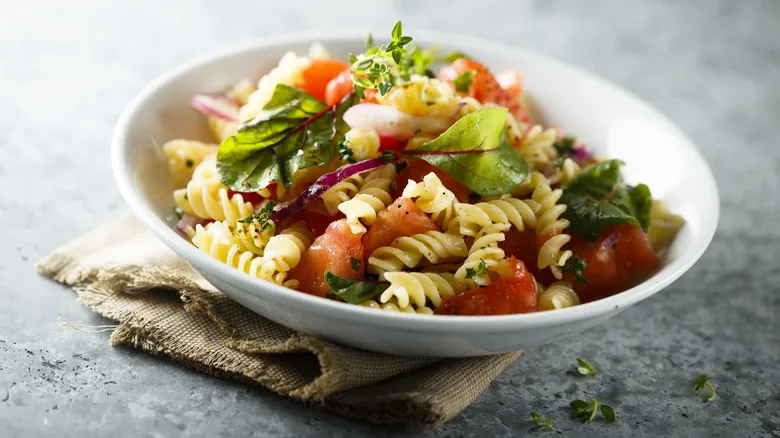Using fresh pasta
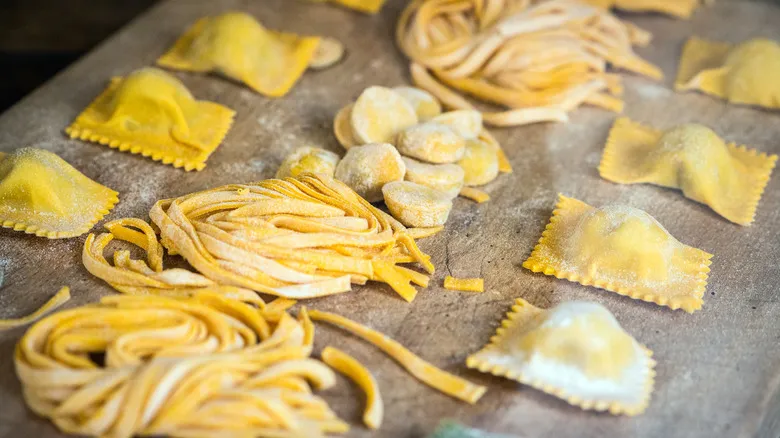
To begin with, it's important to use only dried pasta for pasta salad. While fresh pasta is tender and delicious in hot dishes with sauce, it doesn't hold up well in pasta salad. This is because fresh pasta is more delicate and tends to break down faster than dried pasta once it's cooked and dressed. Dried pasta is more resilient, thanks to the manufacturing process it undergoes before reaching store shelves; it is typically dehydrated and hardened for several hours to a few days. Therefore, always opt for dried pasta when preparing pasta salad.
The only exception is a warm pasta salad that you plan to serve immediately. This is essentially just regular pasta, as it doesn't have to endure the cooling and refrigeration process. In this case, it's generally fine to use fresh noodles. Just be sure to follow warm pasta salad recipes and adhere to their instructions.
Choosing the wrong pasta shape
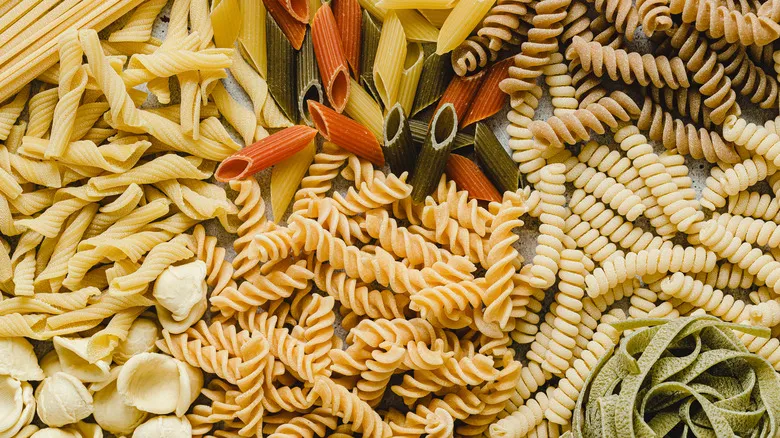
It turns out that pasta salad recipes can be quite particular about the type of pasta used. You might assume that any noodle would suffice, but that's not the case. Longer pasta shapes like fettuccine and spaghetti may be delightful at dinner, but they can lead to a frustrating experience in pasta salads. The sauce and other ingredients struggle to adhere to these shapes, and managing long noodles when they're cold can be quite challenging.
The ideal pasta shapes for cold salads feature numerous grooves, divots, nooks, and crannies that help them capture and hold onto other salad ingredients. Consider using shapes like fusilli, tortellini, or farfalle (commonly known as bowtie pasta), all of which are relatively bite-sized and designed to hold onto flavors. Macaroni, penne, and cavatappi are also great choices. For a more delicate touch in your pasta salad, you might opt for orzo or couscous. While many people think of couscous as a grain, it is actually a small traditional pasta made from semolina flour, originating from the Middle East.
Forgetting to salt the pasta water
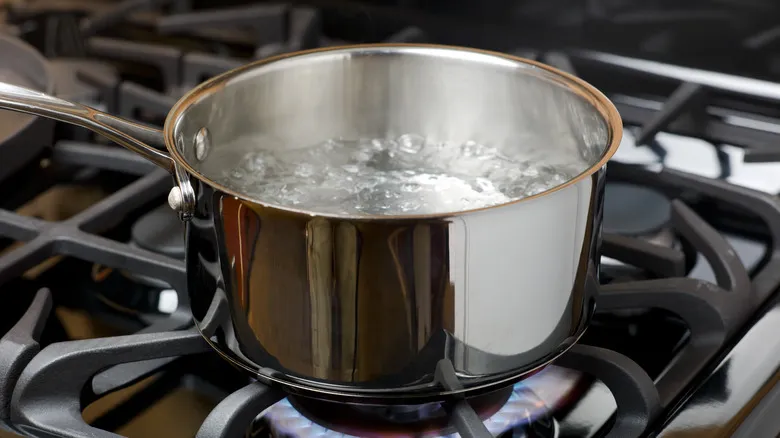
You may think that salting your pasta water isn't necessary since you'll be adding a tasty dressing to your pasta salad. While it's true that no one wants their pasta salad to be overly salty, skipping the salt in the cooking water can result in a bland dish. This happens because chilling the noodles—a crucial step in making pasta salad—often diminishes their flavor. Therefore, it's important to infuse flavor from the beginning by salting the cooking water.
To properly salt your pasta water, use 1 tablespoon of salt for every pound of pasta. Be sure to add the salt only after the water has reached a rolling boil. This is the standard recommendation for hot pasta. However, for cold pasta, you should increase the salt content, so add an additional teaspoon of salt to the boiling water before adding your pasta.
Not undercooking the pasta

Since pasta salad can sit for hours or even days, gradually soaking up more liquid from the dressing, it's important not to cook the noodles all the way through. To maintain the pasta's firmness, cook it just until it's slightly under al dente. This ensures that the noodles have the ideal texture when the dressing is mixed in. Cooking the pasta this way also allows for some flexibility if you add juicy ingredients like tomatoes, olives, pickle juice, tuna, or anything else that tends to release moisture.
Unsure how to tell if the pasta is al dente? Follow the package instructions but remove the pasta 1 to 2 minutes earlier than recommended. This is a dependable method for beginners. Alternatively, you can taste a piece to check for doneness; the pasta should be firm and not mushy, with a slight bite. If the pasta sticks to the wall, it’s already overcooked, so it's best to abandon that method.
Rinsing your pasta
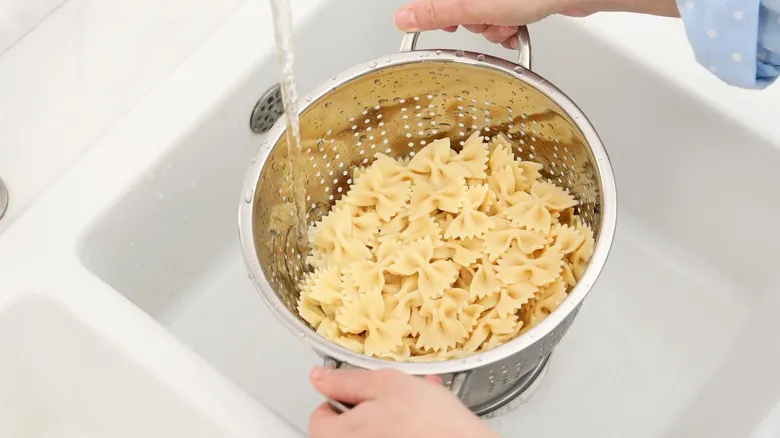
Avoid rinsing your noodles. While it may seem logical to rinse pasta to cool it down quickly and prevent sticking, doing so washes away essential starch that helps the sauce adhere. Instead, immediately coat your pasta with a little olive oil to keep the noodles from clumping together. Although butter might appear to be a suitable substitute for olive oil, it can be problematic for cold salads. While it may look smooth when mixed with warm or room-temperature pasta, it will solidify and become clumpy when chilled.
Stick to fats that remain liquid at room temperature, like olive oil. If you're concerned about achieving creaminess, you can always add cheese or mayonnaise later. After tossing the pasta with oil, let it cool. You might also consider sprinkling some parmesan directly onto the hot pasta, as this will create a sticky base for your sauce to cling to later.
Dressing your noodles at the wrong time

The ideal pasta salad should be dressed after it has cooled but before it becomes cold. This timing allows the salad to soak up plenty of flavor without turning soggy. While some suggest saving a portion of the dressing to add just before serving, we recommend following your specific recipe for guidance on when and how to dress the salad.
To achieve the right temperature for dressing the noodles, spread them out on a rimmed baking sheet immediately after draining and tossing them with olive oil. There's no need to refrigerate the sheet, but doing so can help cool the noodles more quickly. Alternatively, you can chill the baking sheet in the freezer before adding the pasta, which will expedite the cooling process. Just be sure to remove the noodles before they lose all their warmth, as you want to dress them when they are around room temperature.
Treating it like a normal salad
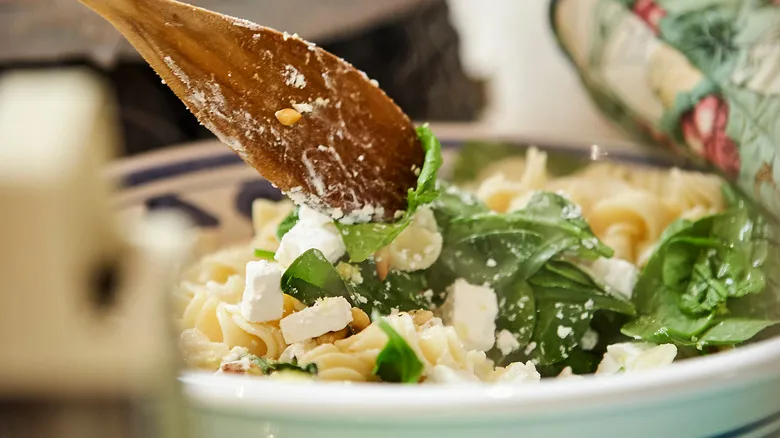
Salad and pasta salad are distinct dishes. If you treat a traditional salad like a pasta salad and dress it in advance, the acids in vinaigrettes and other dressings will begin to break down the vegetables, resulting in a mushy and less fresh texture. Conversely, if you treat your pasta salad like a green salad, you may regret it, as the acid-to-fat ratio suitable for salad dressings is not ideal for cooked pasta.
You can't simply apply any salad dressing to pasta salad; acidic dressings meant for salads can ruin the texture of the noodles. Instead, opt for dressings specifically designed for pasta salads. Aim for a ratio of no more than one part acid to three parts fat to maintain the structural integrity of the dish.
To further differentiate pasta salad from a typical green salad, some chefs suggest approaching the pasta salad preparation as more of a saucing process rather than just dressing. The goal is to allow the flavors to penetrate the other ingredients rather than merely sit on top. For this reason, it's best to dress your pasta while it is still slightly warm.
Preparing the vegetables wrong
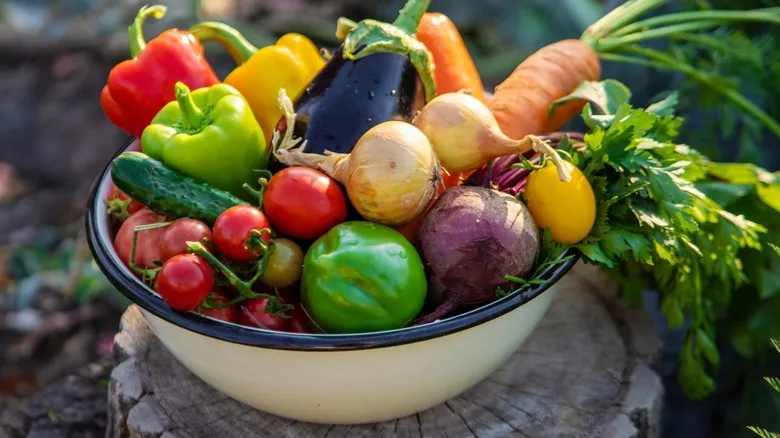
Properly preparing vegetables for this dish is a simple way to elevate your pasta salad. We’re not rabbits, after all. We don’t want to be crunching away on raw veggies. Just like a traditional salad, pasta salad should feature a balanced mix of easy-to-chew ingredients (such as pasta, cheese, or pickles) alongside crunchier elements (like celery, onions, or carrots).
To make things easier, blanch tougher vegetables like broccoli. Similar to the pasta, you should cook the veggies until they are almost tender, but not fully cooked.
Additionally, there’s a right size for vegetables. Oversized pieces can be unappealing, while those that are too small can be difficult to pick up with a fork. Aim for pieces that are no larger than your noodles, at most. It’s fine to cut them smaller, but they should still be bite-sized. Keep in mind: diced, chopped, and thinly sliced is the way to go.
Forgetting to use ingredients other than vegetables

When preparing pasta salad, feel free to go beyond the typical ingredients found in a standard garden salad. Consider incorporating capers, pickles, and nuts, all of which can enhance the flavor of your dish. And don’t forget that cheese is essential!
Adding unique ingredients to your pasta salad can truly elevate it and leave your guests eager to know your secret. For example, using pickle juice can create a vibrant, tangy flavor that complements the pasta beautifully—just use about ½ cup of juice for every ½ pound of pasta for a delightful taste without overwhelming the dish.
Other fantastic non-vegetable additions include pickled onions, diced pickles, minced or grated garlic, and fresh herbs like parsley and dill. Olives—whether black, green, pimiento, or Kalamata—also add a wonderful flavor. Beans, such as kidney beans and chickpeas, can provide a tasty twist, while canned tuna and salmon are excellent choices as well. Just be cautious to avoid butter or fatty meats, as their grease can solidify when the salad is chilled. However, feel free to include a variety of charcuterie, which adds a delightful umami kick to your salad.
Using the wrong ingredient ratios

A well-balanced pasta salad requires the right proportion of pasta to other ingredients. This is particularly important if you're improvising without a recipe, as it helps prevent your salad from becoming too crunchy, soggy, dry, or overloaded with noodles. If you enjoy experimenting in the kitchen, that's perfectly fine, but it's essential to establish some guidelines. After all, math matters, especially when cooking.
The ideal ratio for pasta salad is 1 part pasta to 1½ (or 2) parts other ingredients. Additionally, use ? to ½ cup of dressing for every 4-6 cups of prepared pasta salad. This means you might be using less dressing than you initially think is necessary, which is crucial if the dressing is highly acidic, as it can easily dominate the dish.
For example, a recipe might call for 3 cups of pasta, 5-6 cups of tomatoes, chickpeas, feta, and cucumbers, along with about ? cup of dressing. Remember that ingredients like spinach and basil will shrink as they wilt, so you don’t need to worry about them taking up too much space in your ratios. You can comfortably add about a cup of each to the recipe mentioned above.
Adding delicate foods right away

Maintaining freshness is crucial when it comes to pasta salad, as nothing is more off-putting to diners than wilted vegetables or discolored herbs. Just like with delicate and creamy cheeses, it's important to handle fragile vegetables and flavorings with care. Adding them to the pasta salad while it's still warm can cause these ingredients to cook, which diminishes the appeal of fresh garden vegetables that are prized for their vibrant colors and crisp textures.
For example, avoid adding tomatoes, cucumbers, or leafy greens while you're mixing and dressing the salad, as this can bruise and slightly cook them. Instead, wait until just before serving to incorporate these ingredients. If you need to add extra dressing or seasonings before serving—whether it's specified in the recipe or you're adjusting the flavor after chilling—make sure to add the greens afterward. Reserve the most delicate ingredients for the final touch just before presenting your salad at the table.
Serving it straight from the fridge

We’re not villains. Naturally, we all want to steer clear of food poisoning, and one of the most effective ways to do that is by keeping food out of the danger zone, which is the temperature range of 40-140 degrees Fahrenheit, as stated by the U.S. Department of Agriculture. However, a pasta salad that’s ice-cold is typically unappealing, even on a sweltering summer day. The fat solidifies, the noodles and ingredients become stiff, and the flavors are dulled.
Instead, allow your salad to warm up a bit before serving. This enhances the flavors and makes it easier to chew. It can take up to 2 hours for the ingredients to reach room temperature, so keep this in mind when taking your pasta salad out of the fridge. However, if the food has been left out for 2 hours or longer, it should not be consumed, as it may have been in the danger zone long enough for bacteria to develop. Aim to ensure that your pasta salad reaches room temperature and is eaten within 2 hours.
Using the wrong cheeses
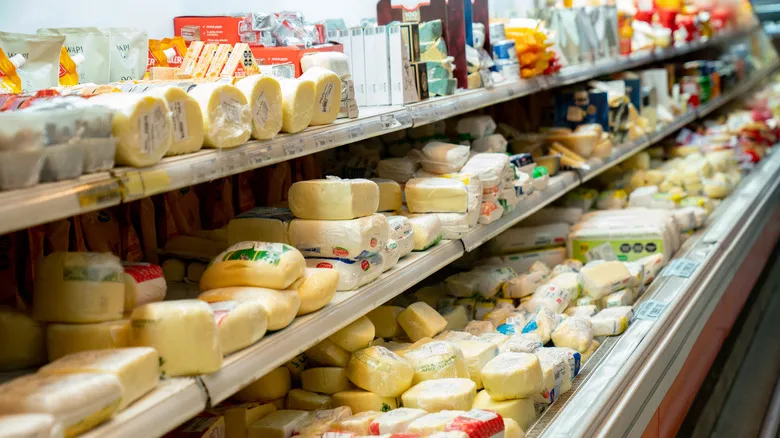
When it comes to pasta salad, celebrity chefs are a reliable source of advice, wouldn’t you agree? One of the top tips from Ina Garten on YouTube is to incorporate salty ingredients. Instead of simply adding salt, using salty and briny components enhances the flavor of the pasta salad, and cheese is an excellent choice for this. Consider using parmesan or feta, both of which blend seamlessly.
However, there are important guidelines to follow when selecting cheese for pasta salad. Avoid using soft cheeses like brie or camembert, as they can be difficult to mix in. Steer clear of cheddar or gouda, which can become overly chewy—not in a pleasant way. Instead, opt for fresh and vibrant cheeses like chèvre or mozzarella. If you choose delicate or creamy cheeses, add them at the end. For hard cheeses, select very hard varieties (such as parmesan or asiago) and grate or shave them finely.
Forgetting to taste your pasta salad before serving it

It's common to assume that your pasta salad is good to go after preparing it in advance. However, this may not be entirely true. Chilling can alter the flavors of food, dulling their intensity and diminishing the saltiness. Our taste buds have tiny channels that are more effective at detecting flavors when food is warm. This is why cold beer tastes less bitter and warmer ice cream tastes sweeter.
Therefore, it's a good idea to taste your salad just before serving. It might require an extra pinch of sea salt, a squeeze of lemon, or a dash of herbs. Just remember to wait until the pasta salad has warmed up a bit before seasoning it. If you season it while it's still cold, you risk overdoing it and finding the flavors overwhelming once it reaches the right temperature.
Not adjusting when preparing Asian pasta salad

Now for the exciting part: Understanding that Asian pasta salad defies many traditional rules, creating a unique style of its own. When preparing Asian-inspired pasta salads, you can disregard many of the previously mentioned mistakes. Why is that? Because Asian noodles are often crafted from grains other than wheat, such as buckwheat, which means they respond differently to acids and have varying levels of chewiness.
Generally, you can add significantly more acidity to Asian noodles without compromising their texture or overwhelming the flavors of your salad. Additionally, you can incorporate a greater amount of crunchy vegetables compared to softer, less chewy wheat noodles. Therefore, when working with pasta and ingredients from Asian cuisines, it's essential to adhere to guidelines that are specific to those components. And don’t overlook the use of salty ingredients like seaweed, which complement pasta salads beautifully. Dried and rehydrated wakame is an excellent choice.
Recommended
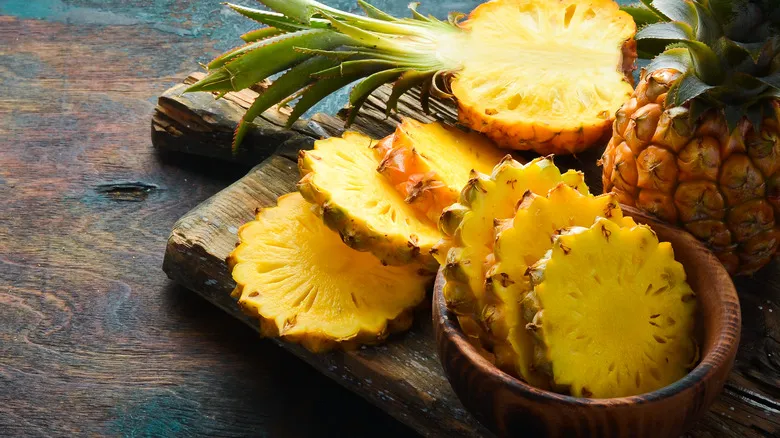
Why Sage Works So Well With Pineapple Flavors
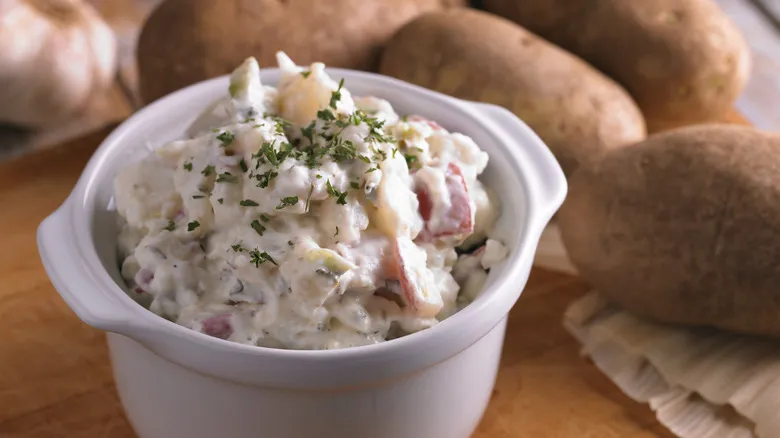
Celery Seeds Add A Stunning Flavor Boost To Potato Salad
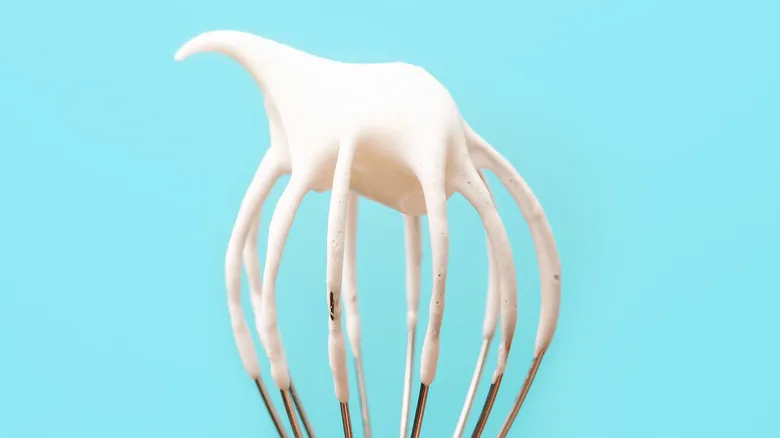
Recipe Calls For A Cold Whisk? Here Is What That Means

13 Mistakes Everyone Makes While Loading A Dishwasher
Next up

